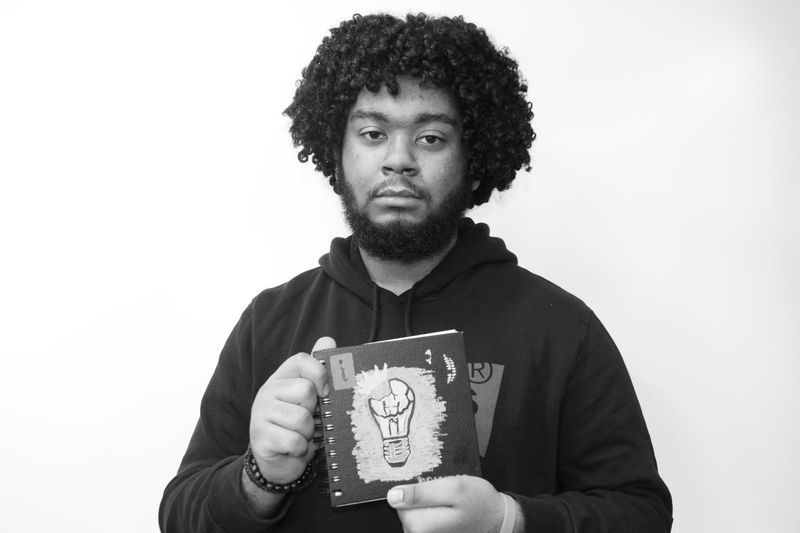We Are America
Harsh Critic
By Isaac

Jeremiah E. Burke High School, Massachusetts
In the second grade, I attended a Catholic school. At this time, Catholic school teachers were no longer nuns, but the majority of the older teachers still kept the mentality of the nuns that once taught them. They would be old and stern, and they often seemed tired of working with children, except for the kids with family ties to their church. The older they were, the more they looked to be living their lives day-to-day, undermining the potential impact they could have on these children.
This was the case with my first art teacher. She had to have been at least eighty years old, and she smelled like dust. She had a bowl cut, and she always wore big round glasses and a sweater with a butterfly pin on it. The pin was likely as old as her, with faded colors and the few remaining rhinestones that hadn’t yet fallen off. Like the pin, her whole persona was stale, ancient, and muted.
She had a narrow-mindedness you could cut with a knife, which felt ironic for someone that grew up surrounded by nuns. Weren’t nuns taught to love all of God’s children? How could she be so quick to judge?
This school, which served approximately 350 students, had a majority-white student body, and I was about one of only four kids of color in the entire school. From the moment I entered the building each day, I felt different, despite being surrounded by the general positivity generated in an elementary school. One of my first interactions with my art teacher personified that. Our art assignment was to draw our families in front of our houses. It was already awkward for me to see everyone draw their two-parent families while I just drew my mom and my brother.
This gave me an early glimpse of how I would be treated differently because of my race.
The art teacher came over and asked what my apartment looked like. I looked up and said, “I don’t live in an apartment. My family owns a home,” to which she replied, “Oh. You look like you’d live in an apartment.”
I just kept working on my picture of me and my mom and my brother in front of our house that we owned. That was my first interaction with racism that I remember.
Throughout the year, that teacher was very impatient with me in class. Any project that a kid would get an A on, I would get a C. Sometimes, I would turn in projects around fifteen minutes late to put in extra effort and personal flare, yet she would never be satisfied with my work -- no matter how hard I tried.
Every time she would give me a bad grade or express her disappointment, it just pushed me harder and harder to work on my art.
That teacher and I were in the same class for three long years: second grade, third grade, and fourth grade. I transferred schools after that, but I never forgot her.
To this day I am still driven by this era in my life. Though negative, these interactions fueled my passion for creating art that stands out in its space and plays on the topics of racism, trauma, and Black success. I will continue to create and share my work publicly to remind children of color that you can use negative moments to create positive outcomes.
© Isaac. All rights reserved. If you are interested in quoting this story, contact the national team and we can put you in touch with the author’s teacher.